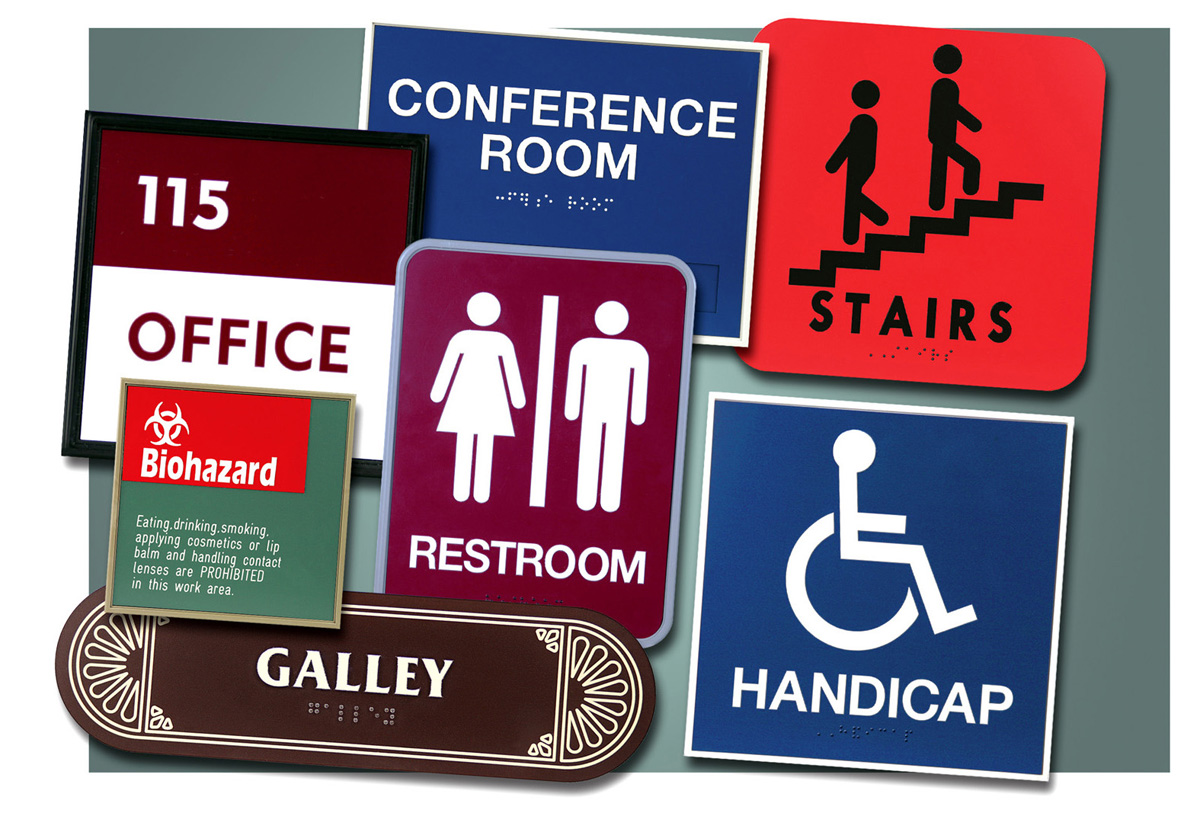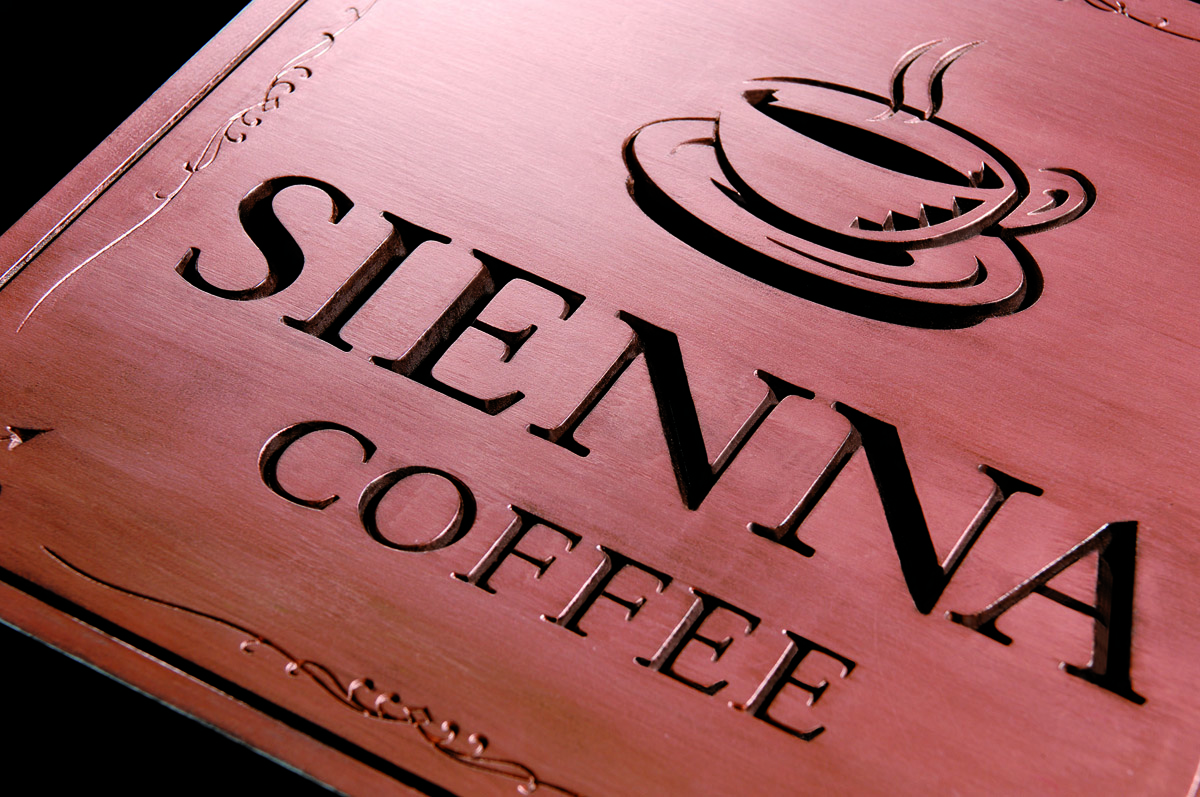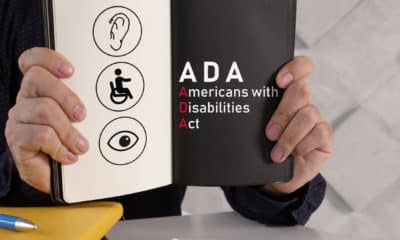Architectural Signs
Scratching the Surface
Make extra money with rotary engravers.
Published
6 years agoon

Advice: All businesses should stick to producing their core products because that is what they do – or should do – best. However, that doesn’t mean a signshop owner shouldn’t explore related profit areas, such as contracting out the crane truck for high-rise work – installing rooftop air conditioners, for example. There’s more. If you operate a storefront signshop, you’ll be more inclined to offer auxiliary retail-type services, such as a secondary digital print operation that can help with shop work as well as produce party posters and photographs for walk-in customers.
One signshop core-related option is engraving, which appeals to walk-in customers (plaques, trophies and scribing silver anniversary cups) but more important may be sales to business and industry (name tags and permanent-information signage that your shop engraves on various media provided by such companies as Rowmark, Marco Awards Group or JDS Industries).
With a rotary engraving machine, you can produce directional signage, metal decoration, ADA-compliant Braille signs, nameplates, ID tags, door signs, gun plates, plaques, stamps, technical plates, molds, trophies, jewelry and decorated apparel …
DOOR SIGNS?
You wouldn’t brag about an engraving order for a single “Keep this door closed” sign, but imagine an order for 100 such signs from a nearby factory. Then consider big-number orders for engraved, two-color plaques that say “Wash hands before leaving restroom,” “Class B Fire Extinguisher,” “No Smoking,” “Drivers must kill truck engine while parked in this area,” or “Emergency stop button.”
You get the idea.
George Custer, owner of Awards & Sign Graphics (Cincinnati) sells, produces and ships engraved trophies and plaques across the US, plus to Canada and Mexico. The shop advertises that it can order and personalize hundreds of items that include team names, stats, individual names and more. Thomas Busch, president of Trophy Awards Manufacturing Inc. (Wilder, KY), utilizes both laser and rotary engravers; his shop produces the complete gamut of engraved items – signs, trophies, plaques, desk name plates – and gains customers from its website, walk-ins and local businesses.
AdvertisementIT’S NOT ALL ABOUT CHOCOLATES

A rotary-type engraver, i.e., one with a spindle and cutting bits, can be less expensive than popular laser-based engravers but aptly performs many engraving tasks. One caveat: a laser engraver may offer more material versatility. For example, a laser system can engrave on standard substrates, plus synthetic leather, wood or such soft substances as bar soap or chocolates. That’s one side of the story, because machines like Vytek’s MX line and others will laser-engrave steel and many other metals, so it’s not all about Aromatique soaps and Ghirardelli truffles.
Another machine option is a CNC cutting router that engraves; that is, a rotary-type machine that can fit one or several optional spindles. Such a machine may be the best engraving-routing investment for a signshop. Vision Engraving and Routing offers numerous models, with its 4 x 8-ft. VR48 CNC router/engraver featuring aluminum T-slot or vacuum table options, and, importantly, a 12-in. Z-axis stroke. With this machine, you can engrave, mill, drill, contour or route.
THE BUSINESS OF ROTARY ENGRAVING
I talked to my friend Adam Sebran, Roland DGA’s rotary products business development manager, who, long ago, introduced me to software-driven machine technology. I asked him what advantages a rotary engraver offers when compared to a laser engraving system. Sebran noted two chief advantages to rotary engraving – the ability to engrave with depth into plastic and metal sign plates, and its use for ADA signs. He also pointed out that rotary engraving is the only method that will accommodate Accent Signage Systems’ Raster Braille Method and its workflow model for making ADA signs, as well as the rotary machine’s ability to make metal substrate signs, engraved decorations and, of course, trophy plates and awards.
All of these products are in common use by hospitals, public buildings and hotels (the more obvious ADA signage markets) for directional and instructional signage and such other products as metal tags for industrial applications, permanent directional or instructional signage, equipment marker tags, electrical control panels, cockpit instrumentation and more. Sebran also noted that rotary engraving is not complicated, that the rudiments are only slightly different than printing or other signmaking applications. And, he said, marketing rotary-engraved sign products is similar to marketing other signage, where it’s always good to have sample signage available to provide to potential customers, as well as when responding to bids and inquiries. It’s the same with advertising, because you simply add engraving services to your product line. However, Sebran said, the best sales method, always, is face-to-face communication and/or in-person demonstrations.
DETAILS, DETAILS
Each machine type – laser or rotary – can produce admirable work, but they surpass one another in specific areas. For example, laser fans brag of high speeds and product diversity, which are demonstrated by Trotec’s Speedy line that laser-engraves up to 140 in. per second, accompanied by rapid pulse rates that create precise details at such speeds. However, rotary engraving machines are also fast and those with multiple heads become production zingers. Also, many rotary engraving manufacturers offer ornate fonts – Script and Old English, for example – that are enhanced by varying the cut depth via Z-axis programming.
AdvertisementSpindle-driven cutters produce sharper cuts, especially if the machine offers Z-axis strokes of varying depths. Thus, a rotary engraver can present artwork with a more precisely carved appearance. Such techniques contrast the soft edges of laser-engraved designs and are especially desired for decorative auto, motorcycle and firearm panels, as well as for metal-based plaques and awards.
To create raised lettering, Braille dots or cuts to insert raised dots, rotary engraving is best for ADA signage. Roland DGA says its EGX Pro series CNC engraving machines have large cutting areas, 2D and 3D engraving and servomotors that produce spindle speeds up to 30,000 rpm. The EXG Pro comes with software and offers an optional ADA-compliant signage solution, but will also produce routed and bas-relief signs, decorated apparel, awards, corporate crests, promotional items, vehicle decorations, and, no surprise, more.
There is always more – engrave name tags for a local hospital or military base; incise gothic scrolls on motorcycles or hotrod-shop chrome accessories; engrave custom control panels for air conditioners, HVAC system instructions, boats, aircraft, semi-truck operational panels, elevator guides, industrial panels … and that’s just a bit of what you can carve out.

SPONSORED VIDEO
Introducing the Sign Industry Podcast
The Sign Industry Podcast is a platform for every sign person out there — from the old-timers who bent neon and hand-lettered boats to those venturing into new technologies — we want to get their stories out for everyone to hear. Come join us and listen to stories, learn tricks or techniques, and get insights of what’s to come. We are the world’s second oldest profession. The folks who started the world’s oldest profession needed a sign.
You may like

NUtec Digital Ink Invests in Solar Energy for Facility

5 Reasons to Sell a Sign Company Plus 6 Options

21 Larry Albright Plasma Globes, Crackle Tubes and More
Subscribe

Bulletins
Get the most important news and business ideas from Signs of the Times magazine's news bulletin.
Most Popular
-

 Tip Sheet2 weeks ago
Tip Sheet2 weeks agoAlways Brand Yourself and Wear Fewer Hats — Two of April’s Sign Tips
-

 Photo Gallery3 days ago
Photo Gallery3 days ago30 Snapshots of the 2024 ISA Sign Expo
-

 Ask Signs of the Times5 days ago
Ask Signs of the Times5 days agoWhy Are Signs from Canva so Overloaded and Similar?
-

 Real Deal2 weeks ago
Real Deal2 weeks agoA Woman Sign Company Owner Confronts a Sexist Wholesaler
-

 Paula Fargo17 hours ago
Paula Fargo17 hours ago5 Reasons to Sell a Sign Company Plus 6 Options
-

 Benchmarks1 week ago
Benchmarks1 week ago6 Sports Venue Signs Deserving a Standing Ovation
-

 Photo Gallery17 hours ago
Photo Gallery17 hours ago21 Larry Albright Plasma Globes, Crackle Tubes and More
-

 Women in Signs2 weeks ago
Women in Signs2 weeks ago2024 Women in Signs: Megan Bradley










